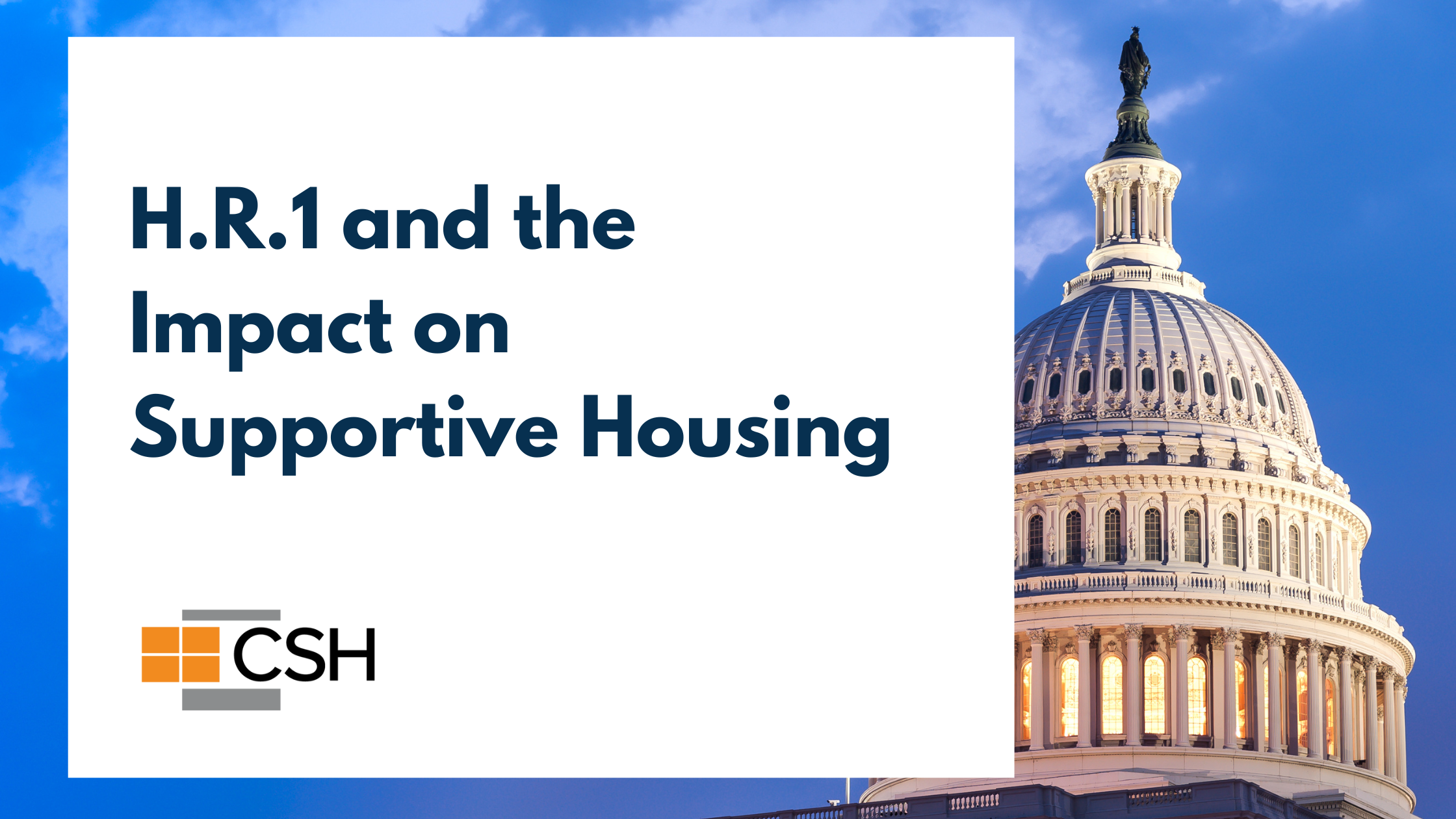This one-pager provides five proven state actions to reduce unsheltered homelessness. In response to recent executive orders, these practical, evidence-based strategies for responding to unsheltered homelessness deliver measurable results.
Geography: National
Share
Share on facebook Share on facebook Share on facebook Share on facebook Share on facebook Share on facebookSupportive Housing Research Bibliography of Sources – 2002 to 2025
The growth of supportive housing over the last 30 years has been built on a foundation of research showing that it provides core benefits to people and communities. CSH compiled this list of selected literature on supportive housing from the last 20 years as a resource. Please review each source carefully to understand how to apply it to your work. Download a summary of outcomes in supportive housing including many of these listed sources by clicking here.
Share
Share on facebook Share on facebook Share on facebook Share on facebook Share on facebook Share on facebookThe Evidence for Supportive Housing – Substance Use
Supportive housing is a model of affordable housing that is designed specifically for people who need services to recover and thrive in their community. It serves people who are facing complex physical and behavioral health challenges while also experiencing homelessness, institutionalization, and/or housing instability. People in supportive housing pay 30% of their income toward rent and are accountable to a lease with all of the rights and responsibilities of tenancy.
In dozens of studies across the country over the last 20 years, supportive housing has proven to be an effective intervention that improves housing stability, reduces the use of expensive crisis care, and improves outcomes even for individuals with complex needs. This brief highlights key evidence for communities to consider as they work to meet the housing and support needs of all individuals and families.
As with the population of people experiencing homelessness, many people in supportive housing are dealing with substance use disorder. The stability that supportive housing provides supports many tenants in accessing substance use treatment and reducing or eliminating their use. This brief highlights key evidence related to supportive housing and substance use.
Share
Share on facebook Share on facebook Share on facebook Share on facebook Share on facebook Share on facebookThe Evidence for Supportive Housing
Supportive housing is a model of affordable housing that is designed specifically for people who need services to recover and thrive in their community. It serves people who are facing complex physical and behavioral health challenges while also experiencing homelessness, institutionalization, and/or housing instability. People in supportive housing pay 30% of their income toward rent and are accountable to a lease with all of the rights and responsibilities of tenancy.
In dozens of studies across the country over the last 20 years, supportive housing has proven to be an effective intervention that improves housing stability, reduces the use of expensive crisis care, and improves outcomes even for individuals with complex needs. This brief highlights key evidence for communities to consider as they work to meet the housing and support needs of all individuals and families.
Share
Share on facebook Share on facebook Share on facebook Share on facebook Share on facebook Share on facebookCSH Quality Supportive Housing Standards
Supportive housing combines affordable housing with supportive services to help people who face the most complex challenges live with stability, autonomy, and dignity. CSH created these standards to guide a wide range of groups—including tenant leaders, housing developers, landlords, service providers, funders, property managers, government officials, and health care organizations—to work together to build and operate high-quality supportive housing.
The Quality Standards apply to all types of projects, whether site-based or scattered-site, and in rural, suburban, or urban areas. How the standards are put into practice may vary due to the diversity of supportive housing models.
Share
Share on facebook Share on facebook Share on facebook Share on facebook Share on facebook Share on facebookCSH Pre-Development Quality Standards Checklist
This resource breaks down the core components of supportive housing and explains how to align a project with the CSH Quality Standards when planning a new development.
Share
Share on facebook Share on facebook Share on facebook Share on facebook Share on facebook Share on facebookSummary of H.R.1 Medicaid Provisions
H.R.1 is estimated to reduce federal spending on Medicaid by more than $1 trillion over ten years, and cause as many as ten million people to lose their health insurance.
Share
Share on facebook Share on facebook Share on facebook Share on facebook Share on facebook Share on facebookSummary of H.R.1 Finance Provisions
The new law enacts policy and funding changes to key housing development financing tools: the Private Activity Bonds (PABs) and 4% Low Income Housing Tax Credit (LIHTC) Program and the 9% LIHTC Program.
Share
Share on facebook Share on facebook Share on facebook Share on facebook Share on facebook Share on facebookA Practice Framework for Delivering Services to Families in Supportive Housing
This document provides a framework for practice in family supportive housing settings. It is intended to be a capacity-building tool for those who are designing or already providing case management services for families living in supportive housing. However, those in the supportive housing field are encouraged to further enhance this tool with their own experiences and practice protocols.
Share
Share on facebook Share on facebook Share on facebook Share on facebook Share on facebook Share on facebookWelcome Home: Design and Practice Guidance for Supportive Housing for Families with Children
This guide is intended for supportive housing administrators and practitioners who are developing and involved in supportive housing efforts that serve families with children. Families being served by supportive housing efforts face a complex set of challenges including long-term and repeated homelessness, child welfare involvement, mental health issues, domestic violence, and a parental history of trauma. The instability, trauma and complex needs of these families not only impact their housing outcomes, but also their parenting and child development outcomes. Permanent supportive housing for these families provides a platform for adult healing, family strengthening and a healthier life course for the children and youth. To support a family’s ability to use the opportunity that supportive housing provides fully it will be important for supportive housing providers to build an environment that is both developmentally appropriate to the needs of children and responsive to the unique needs and pressures of parents.








